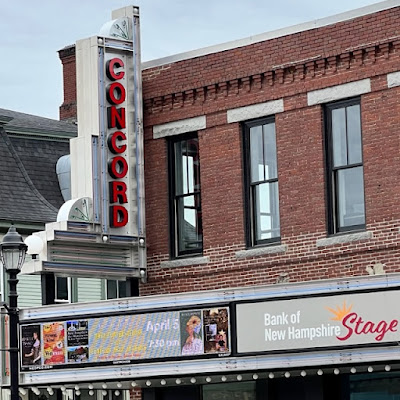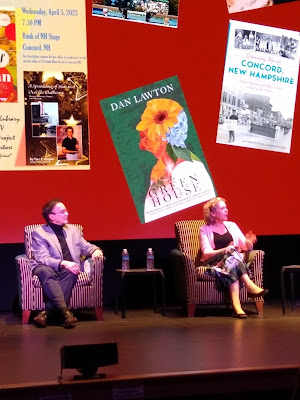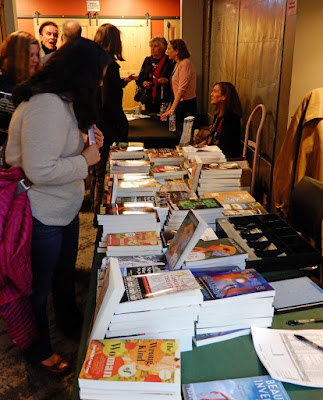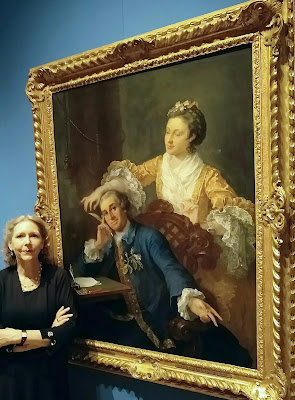Exactly one year ago, at the conclusion of the first on-stage authors' event, my co-producer and collaborator and close author-television host friend Paul Brogan and I knew this would be an annual celebration of local literary talent. And all these months since then, we and our moderator/interview Laura Knoy, formerly of NPR and now podcast host and novelist, have been planning and meeting and preparing. We invited three different authors writing in different genres--Sarah McCraw Crow, Dan Lawton, and Kathleen Bailey--to take part in the interviews. We also arranged for four other authors to sit in the front row to be recognized as well. And like last time, Gibson's, a fantastic and famous independent bookstore, set up shop in the lobby for the autographing session afterwards.
Although Laura, Paul, and I live near one another, we're also very busy in various ways in the community--as well as writing our books. Sometimes it was easier to meet on Zoom.
 |
| Laura, Paul & me at a production meeting via Zoom |
Because Paul has a television show, on which I've been a frequent guest--and sometime guest interviewer--last month he invited Laura and me to talk up the event. We also did radio show and newspaper interviews and various online promotions.
 |
| Me, Laura & Paul during the television interview. |
Two days before the big night, the three of us met at the downtown theatre for a walk through with our production manager and to choose stage furniture. And of course, check with the box office to find out the number of reservations!
 |
| Sitting on the stage at the walk-through |
It's so cool when your event (book cover) is featured on a theatre marquee!
 |
| The marquee--my book cover is far right |
And then our big night arrived!
 |
| Almost showtime! |
Because Paul and I have both had books released since the 2022 event--his memoir and my latest,
The Myrtle Wand--Laura chatted briefly with us before we brought on our other three participants.
 |
| Paul and Me during our interview |
The full line-up on the stage. Those chairs were so attractive and comfortable--the stagehands brought them down from the upstairs cocktail lounge.
Paul, Me, Sarah, Kathleen, Dan, Laura
Discussion about our books and writing process and challenges was interspersed with two Question & Answer sessions.
 |
| Using my hands to make a point--a habit! |
It was great to talk with other writers and readers in the lobby booksigning. And to sign books!
 |
| Chatting with another writer of historical fiction. |
Five authors on the stage and four in the front row, some multi-published, equals a lot of books for sale!
 |
| The crowded table |
Even before the Second Annual event, the production trio was already discussing the Third Annual! After recovering from a hectic publicity campaign and all the aspects of organisation and sponsor solicitation, we'll re-convene and start again!












.jpg)





























